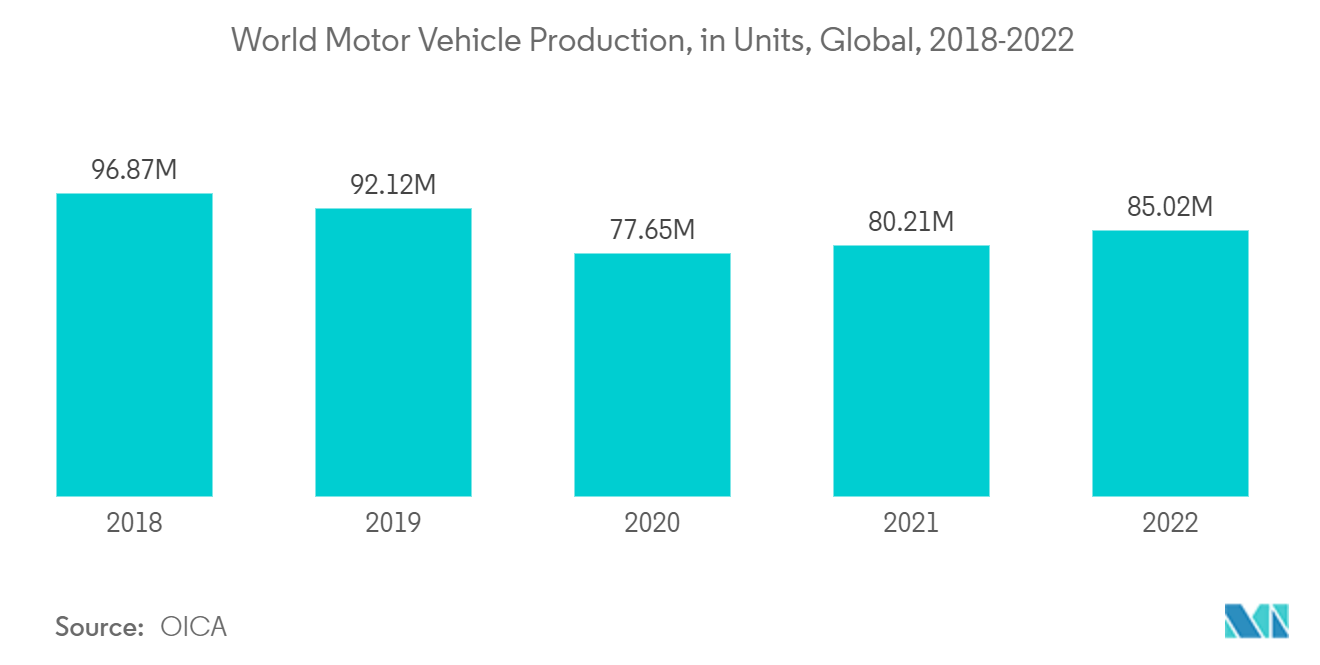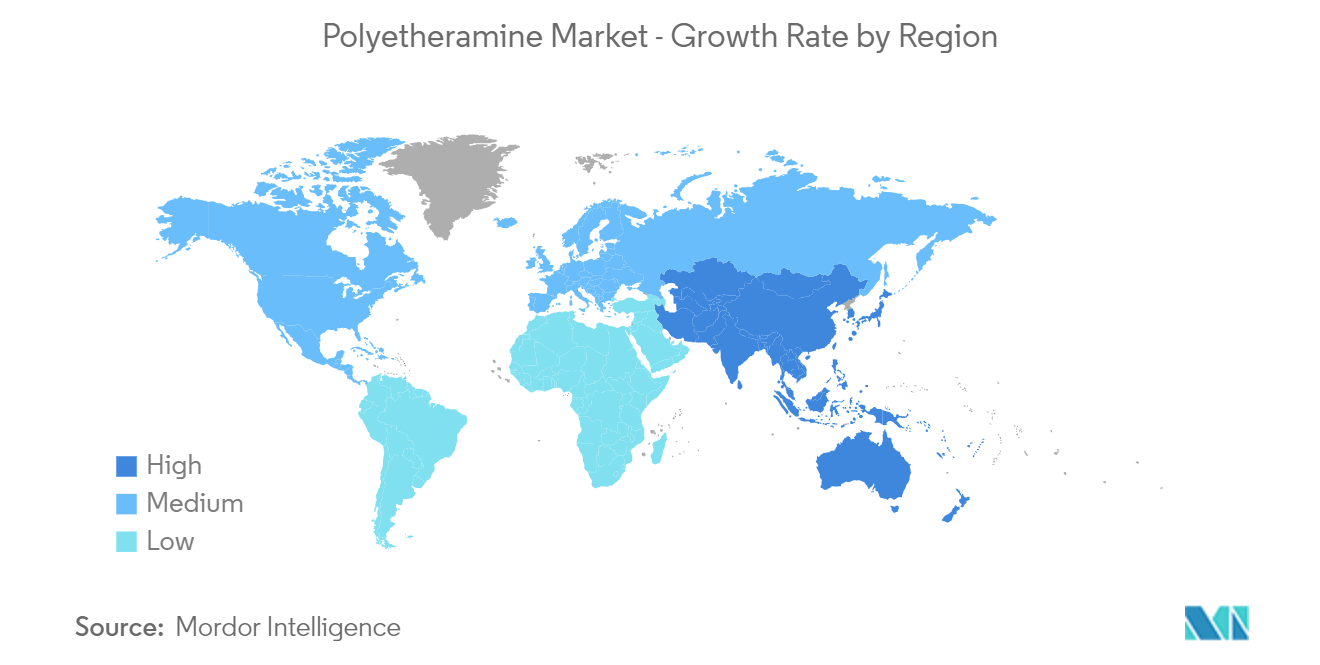Market Trends of Polyetheramine Industry
Increasing Demand from Composite Application
- Polyetheramines are typical curing agents that comprise polyether and amine molecules and are used to enhance the properties of end products, such as flexibility, hydrophobicity, hydrophilicity, and toughness.
- Due to their unique properties, polyetheramines are widely used in composite applications as they provide a critical balance between strength and flexibility.
- Furthermore, polyether amine-based composites are designed to replace wood, metal, and concrete. They are useful in highly demanding applications such as aerospace, automotive parts, and wind turbine blades owing to their lightweight design, high dielectric strength, and high resistance to environmental degradation.
- The automotive industry is one of the major contributors to the composites segment. According to OICA, global automobile production stood at over 85 million units in 2022, approximately 6% more than the previous year.
- Additionally, America's automotive production grew by 10% year on year in 2022. Canada, Mexico, and the United States saw a production increase of 10%, with motor vehicle production reaching 12,28,735 units, 35,09,072 units, and 1,00,60,339 units, respectively. In the South American region, Colombia saw the greatest jump in year-on-year production, reaching 51,455 units, an increase of 26%. Argentina also saw a massive 24% increase, with production reaching 5,36,893 units.
- From an overall perspective, higher production of automobiles in 2022 presented a bigger market for polyetheramines in terms of their usage in their bodies as composites.
- According to the China Association of Automobile Manufacturing (CAAM), the production of new energy vehicles (NEVs) in the country witnessed a year-on-year increase of 96.9 percent in December 2022. Thus, the expanding electric vehicle market is expected to increase the demand for polyetheramine during the forecast period.
- Overall, all such factors are expected to determine the demand for polyetheramine in this application over the forecast period.

Asia-Pacific Region to Dominate the Market
- The Asia-Pacific region is expected to dominate the market for polyetheramine during the forecast period. In countries like China and India, owing to the increasing demand for wind energy and construction & building applications, the demand for polyetheramine has been increasing in the region.
- Polyetheramine is widely used as an additive in adhesives to adhere to two parts of blades and in composites used in wind turbine blades. A high demand for polyetheramine in wind energy applications will propel its market during the forecast period.
- The Ministry of Housing and Urban-Rural Development predicts that China's construction industry will continue to contribute 6% of the nation's GDP through the year 2025. Keeping in view the given forecasts, the Chinese government unveiled a five-year plan in January 2022 focused on making the construction sector more sustainable and quality-driven. China is planning to increase the construction of prefabricated buildings to reduce pollution and waste from construction sites. Furthermore, the construction industry will be transitioning to modernized practices, which will increase the demand for products like polyetheramine.
- Moreover, the Indian government has been actively boosting housing construction to provide homes to about 1.3 billion people. The country is likely to witness around USD 1.3 trillion of investment in housing over the next six to seven years. It is likely to witness the construction of 60 million new homes in the country, which is a major boosting factor for the market studied.
- Furthermore, according to the Ministry of Land, Infrastructure, Transport, and Tourism (MLIT) Japan, in 2022, approximately 859.5 thousand housing starts began in Japan, which represented an increase of 0.4% as compared to the previous year.
- The aforementioned factors, coupled with government support, are contributing to the increasing demand for polyetheramine during the forecast period.


